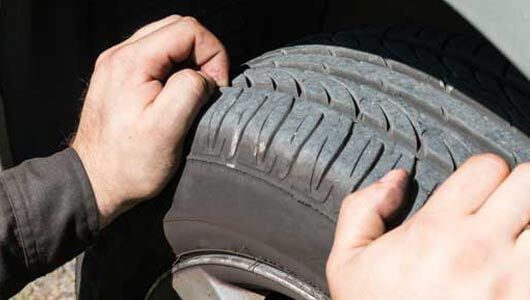Can you use winter tires in the summer?

Winter tires are designed for use in one season: winter. Though using 3-seasons in the winter could be more harmful than if you were to use winter tires year round, if you drive your winters in warm months, you’ll sacrifice performance, fuel economy, and your winter tires’ lifespan.
The good news is, there is a dedicated winter tire that doubles as a summer tire. It’s called the all-weather tire, but we’ll get to that in a moment. For now, why shouldn’t you drive winter tires in the summer?
What's the difference between winter, 3-season, and summer tires?
The rubber compound of winter tires has been designed to stay soft and provide grip at temperatures of +7 C and below. All-season and summer tires have a harder compound that provides a better grip at temperatures above +7 C.
Winter tires use a more aggressive tread pattern that grips onto ice and snow and pushes away slush, while 3-season (all-season) and summer tires have a finer tread that grips pavement in warm and dry as well as in mild, wet conditions.
What are the risks if you use winter tires year round?
Faster and uneven tire wear - On warm and hot road surfaces, a winter tire’s rubber compound wears quickly and more unevenly. Winter tires are meant to last two-to-three seasons, but when they’re mounted on a vehicle for 12 months consecutively, they need to be replaced sooner.
Poor performance on dry and wet pavement - Designed to give superior traction on ice and snow, winter tires lose their handling ability when driven on dry or wet roads. The softer, squishier compound of a winter tire decreases maneuvering and braking response in warmer weather and can cause excessive noise when driven on dry pavement.
Decreased fuel economy - The rolling resistance caused by driving winter tires in the off-season also translates to spending more at the pump. Summer tires have a harder compound that makes them roll smoothly, and that means more fuel savings.
When to take off winter tires
In Canada, it can be tricky to tell when it’s the right time to finally swap out your winter tires. The best way to tell is not by the snow but by the temperature: Once your area is seeing temperatures of 7C or above most of the time, you’re safe to do your winter tire changeover.
Why is temperature the best indication of when to use and remove your winter tires? That’s because dedicated winter tires have a rubber compound designed to stay soft and grippy in temperatures of 7C and below.
Are there any other type of tires that can be used all year long?
If you only have the budget for one set of tires to use throughout the year, one solution is to look for all-weather tires. Designed with reliable grip and stability, all-weather tires can be driven in both the colder and warmer months.
However, while all-weather tires are safe to drive in most winter conditions, if you live in an area where you consistently face heavy, hard-packed snow and ice, including black ice, winter tires will provide the braking and cornering grip you need.
To learn more, read our post All-Weather vs. 3-Season vs. Winter Tires.





